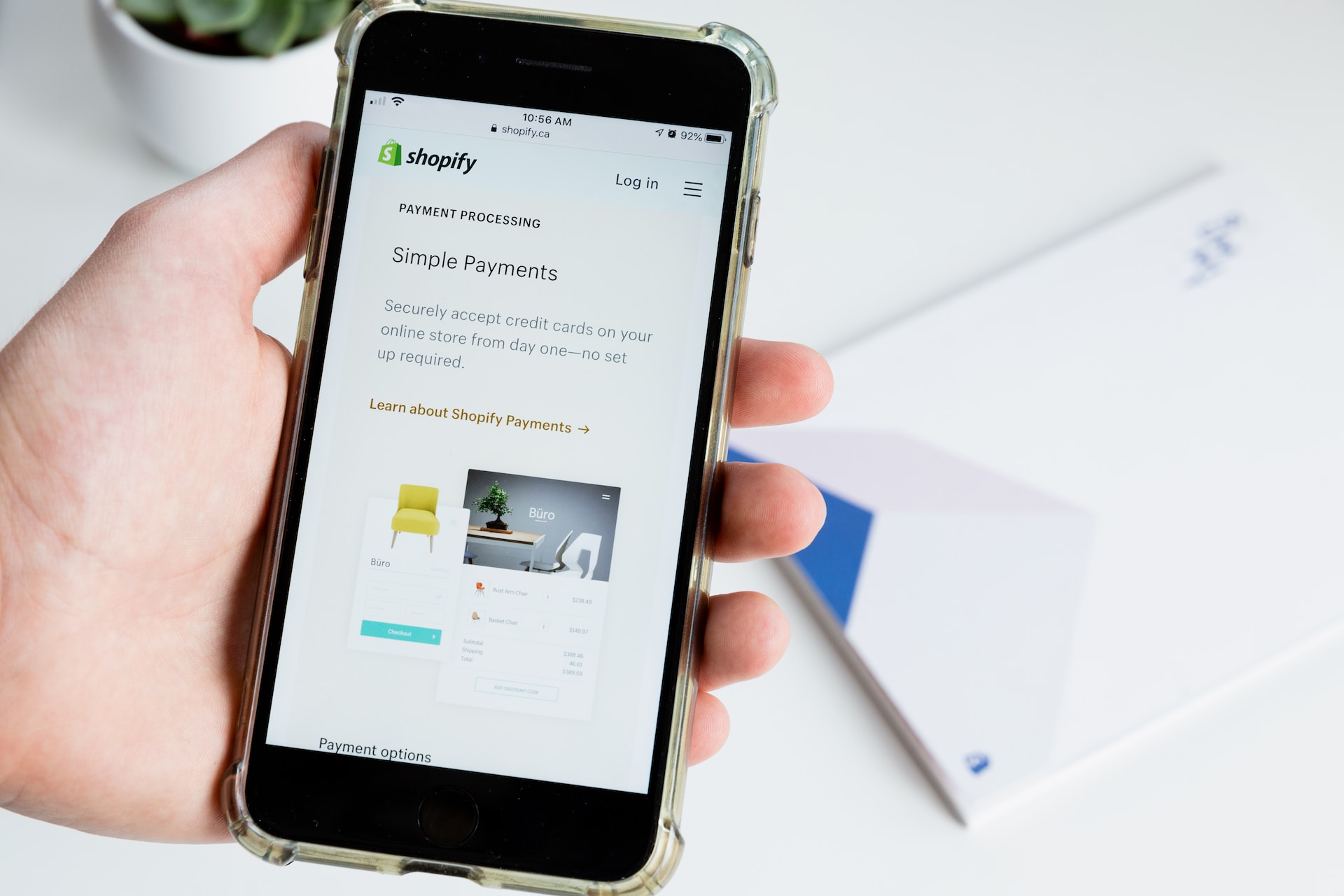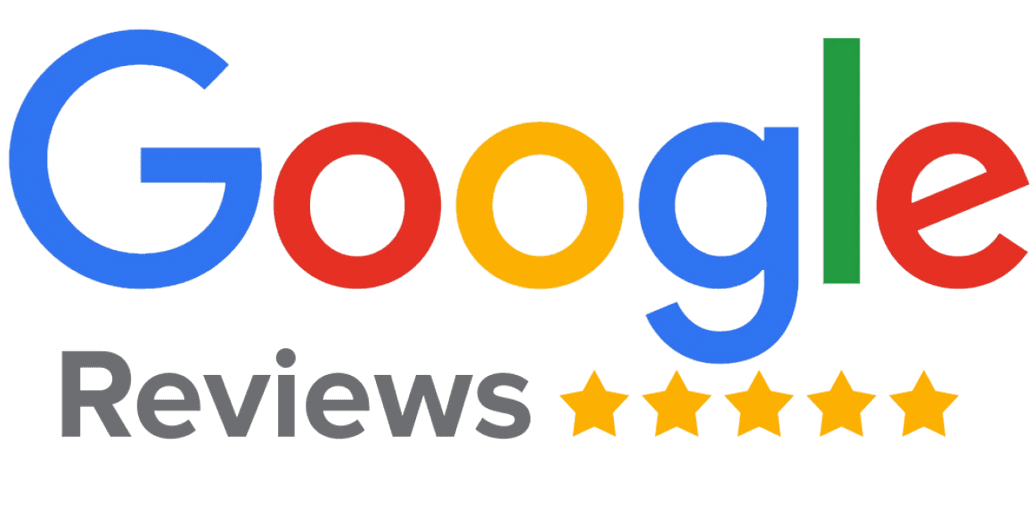How do I Use SEO Plugins in WordPress?
As you start to use WordPress you will learn just how powerful it is for web development and one of its best features is the ability to install third-party plugins. These are small “programs” others have developed that give WordPress additional functionality.
If you want to optimize your WordPress site and improve your online presence, the best category of plugins you can use are SEO plugins. We delve into the exciting world of SEO plugins below and explain what they are, some great examples, and how to use them.
What are SEO Plugins and Why Are They Important?
SEO plugins for WordPress are dedicated to optimizing your web content for search engines. They typically give advice and pointers on using keywords, images, and metadata on your web pages and blog articles.
The aim of SEO plugins for WordPress is to make your website visible to search engines like Google for specific keywords. They are typically easy to use and can be as advanced or minimalistic as you need depending on the level of SEO you require.
Different SEO Plugins for WordPress and How to Use Them
There is a huge variety of SEO plugins but not all of them are worth your time. Our three favorite options for SEO for WooCommerce and WordPress sites are YOAST SEO, Rank Math, and Google Analytics.
YOAST SEO
YOAST SEO is a top-rated SEO plugin for WordPress and it has a range of features that allow you to optimize your website content. Beneath each WordPress page, there is a dropdown section for SEO analysis and this contains problems and improvements that you need to address.
This includes things like meta description length, text length, SEO title length, and general keyword usage. It’s an incredibly useful tool as it highlights areas in the text that need improving for things like readability so you can easily see where you need to use less passive tense or have duplicate sentences.
Readability is just as important as keyword usage for SEO optimization so this tool is really useful.
Rank Math
Rank Math is one of my favorite WordPress SEO plugins due to its simplicity and how easy it is to optimize your web content. The plugin is easy to install and once you have set it up, you get a neat toolbar on the right-hand side of WordPress when you open any content.
This gives you an SEO score out of 10 together with the main areas that need to be improved. This includes basic SEO, metadata, and content readability. You get simple checkboxes for each section so you can work down the list and make sure everything is done like using the focus keyword in the meta description and having a decent keyword density.
You can also edit the Google snippet that displays on search engines including the meta description, title, and URL slug. If you want a basic intro to SEO and to get your web content optimized quickly, Rank Math is a great option.
Google Analytics
Google Analytics is one of the best analytical tools available and it’s free to use! Aside from being free, you can also integrate your Google Analytics account with your WordPress website. This gives you access to a virtually unlimited wave of data relating to your website, how it is used, and how it is performing.
WordPress has a dedicated integration walkthrough for Google Analytics so it should be relatively easy to set up. Just follow the steps and enter your Google Analytics account info and you should be good to go.
The only downside is that Google Analytics integration is only available for the premium, business, and eCommerce WordPress plans.
SEO Plugins are Invaluable for Your WordPress SEO Optimization
If you want to make SEO easier and see exactly what you can do to optimize your web content, SEO plugins are vital for WordPress. Third-party plugins like YOAST SEO and Rank Math are invaluable for optimizing your website pages and blog articles and using your keywords effectively.
At the same time, integrating Google Analytics with your WordPress site gives you access to a wealth of metrics and data that you can use for things like PPC campaigns, localized customer targeting, and continual SEO improvements.
What Are The 3 Steps to Keyword Searching?
SEO is a complete, multi-faceted discipline and there are many things that you have to learn to create high-quality SEO campaigns that yield results. An underlying aspect of SEO that always remains important, however, and is worth learning at an SEO training London course is keyword research.
Keywords form the basis of your SEO strategies and are what you optimize your content around. If your business doesn’t use the right keywords, your SEO may not bring in the right customers, and get decent conversions.
The core of keyword research can be broken down into three steps – locating, analyzing, and targeting, and we explain them below.
Step 1 - Locating Keywords
Before you can do anything you need to have a list of keywords to work with! This is the first thing you must do and you can do the following steps:
- Find seed keywords using basic business insight
- Generate additional keywords from these seeds
- Use keyword research tools for more detailed insight
A simple starting point is to brainstorm ideas and find keywords based on your business and what it does. What industry is your business part of? What products or services do you sell? Is your company global or does it serve a particular region? Questions like these can help generate keyword lists.
You can use this technique to build a list of seed keywords. These are starting points that you can then spawn other keywords. For example, you have a car dealership in Essex. A seed keyword could be “car dealership”. You could then spawn additional keywords from this by adding words like “car dealership in Essex”, and “car dealership in London”.
Lastly, with a basic keyword list in place, you can use keyword research tools like Google Keyword Planner to find more short-term and long tail keywords.
Step 2 - Analyzing Keywords
Now that you have a list of keywords, you have to narrow your choices and select the best options that you want to target and use as your focus keywords. Two important metrics to consider to select keywords include:
- Search volume
- Keyword difficulty
The search volume relates to how popular the word is and how many people search for it. If it has a higher search volume then it has the potential to generate more conversions.
Keyword difficulty relates to how hard it is to rank for that word or phrase. Different platforms give keyword difficulty various rank schemes like Easy to Very Hard. Basically, it denotes the competition and how likely you are to rank for it.
You have to decide which keywords you want to try and rank for based on the data. Bear in mind that keywords with a high search volume can drive more traffic, but they are usually much harder to rank for.
In contrast, low search volume keywords may not yield as many results, but there is often less competition and you can put less effort into the optimization and still rank for the terms.
Step 3 - Targeting Keywords
With your short-term and long-tail keywords selected, you now need to determine how you will target them in your web content. Two important factors to determine this include:
- Primary and secondary keywords
- Customer search intent
A primary keyword is typically the one that you want to rank the most for. It will be used frequently in your web content such as headings, and meta tags. Secondary keywords are also important but they are not your first target. These are used more sporadically in your content.
Before you do any optimization you must determine the primary and secondary keywords. After that, understanding the search intent of your customers is vital too. It’s no good to simply try and rank for keywords without knowing the context they are used, and why customers will search for them.
You can use common sense for this and put yourself in the shoes of your customers. There are also tools available that can help you understand the intent and use this to better target your keywords.
With targeting sorted, you are now ready to optimize your web content and start using your keywords!
Follow These 3 Simple Steps to Get the Right Keywords for Your Business
Keyword research doesn’t have to be difficult but it is crucial to get it right and give enough attention to the process. By using the above three steps, you can make sure that you start your SEO campaigns correctly and have the right keywords to optimize your web content.
10 Enterprise SEO Keyword Research Tips
As an enterprise business, you most likely have an SEO strategy in place and optimized web content. But is your strategy as successful as you would like and are you achieving your SEO goals? If not, a common issue we find when offering enterprise SEO services is a lack of proper keyword research.
This is an area enterprise businesses could often be doing more and we have listed 10 simple tips below that you can use to give your keyword research a boost.
1. Check what your competitors are doing!
There is absolutely no harm in scoping out the competition and seeing what keywords they are using! Everyone does it and they have probably already crawled your website! Competitor keyword usage is invaluable and you can see what is and isn’t working for them and gain insight.
2. Break your web content into categories
As an enterprise business, your website is most likely large with multiple pages and products. This can be difficult to maintain and tough to track keywords and keep a cohesive SEO strategy.
To make things easier and more manageable as you grow, segment your content into categories. This could be categories like products, info pages, and customer pages, for example. You can then split keyword research between these different categories.
3. Take advantage of seasons and seasonal events
Seasonal keywords and keywords tied to specific events can be impactful and it is something your enterprise business should jump on. This could be keywords relating to specific seasons like winter and summer, or keywords for popular events like Black Friday, Mother’s Day, Christmas, and Easter.
4. Improve and bulk up existing content
Instead of continually pumping out new content and potentially creating a complex website hierarchy that is difficult to understand, look at your existing content and see if any of it can be improved.
You may have a range of pages and articles that are thin in terms of content – bulk these up and use them to further your keyword strategies.
5. Don’t discount small businesses
Small businesses can provide valuable insight into things like localization and they should not be overlooked. Sure, they aren’t operating on the same scale as you, but they could provide useful insight for things like long-tail keywords.
6. Check your branded keywords
Branded keywords directly use your business name or something associated with your company. It’s important to keep track of these and see how your reputation is doing. Look for negative keywords relating to your brand and see if there are any common issues you could resolve to boost your reputation.
7. Analyse Google SERPs for useful info
Google SERPs are a trove of information. You can first look at the different websites that are ranking highly and the content they are using. You can also use the “People also ask” feature and look at FAQs or other search strings relating to your keywords to find other potential opportunities.
8. Ask your customers!
Your enterprise business most likely has a large customer base so why not tap into that and perform a little customer market research? Gaining insight from the people you are targeting is a no-brainer. They can give you exactly what you need and potentially show you what they typically search for and common issues they get irritate with when searching or using your website.
9. Take into consideration user intent
User intent relates to why the user is searching. Why has someone just searched for “garden sheds Essex”? Understanding intent can help refine your keywords but also allow you to target your content more to customer needs and desires. If you don’t know the customer’s intent, you could use keywords in the completely wrong context.
10. Use other sources to find keyword data
Keyword research tools are highly useful but they are not the only source of data. You must try to think outside the box and look at other platforms for inspiration. Websites like Amazon, Quora, Reddit, and Wikipedia can prove useful and provide keywords or SEO insight that you may not have thought of.
Keyword Research is the Starting Point of Your Successful Enterprise SEO Strategy
Without the right keywords, your SEO strategy for your enterprise business may fall short and this is why it’s important to make thorough research and think outside the box. Hopefully, these 10 tips have given you food for thought and will help you rank for the right keywords.
The Ultimate Guide to Google Ads Audience Targeting
Google Ads is a powerful tool used by businesses of all sizes to reach a target audience, promote products or services, and ultimately, to increase conversions. One of the most compelling features of Google Ads is its robust audience targeting capabilities, enabling you to show your ads to specific groups of people – aka, those who are most likely to engage with your business and convert. In the following article, we’re going to take a look into the nuances of Google Ads audience targeting, unpacking its potential, and exploring different ways you can leverage this tool to your advantage. Let’s get started!
What is Google ads audience targeting?
Google Ads audience targeting is a feature that allows advertisers to refine their ad campaigns to reach specific groups of people based on various criteria. This ensures that your ads are shown to the most relevant users, thereby increasing the likelihood of engagement and conversion.
With effective audience targeting in your Google Ads campaigns, you’re better positioned to reach potential customers who are most likely to be interested in your products or services, therefore improving the effectiveness and ROI of your advertising efforts.
Unpacking Google Ads Targeting Options
So, what other options do businesses have when it comes to audience targeting with Google ads? Let’s take a look:
Demographic targeting
Demographic targeting is a popular and instrumental feature that enables advertisers to delineate their audience based on key demographic factors. These encompass aspects such as age, gender, parental status, and household income, allowing for a granular approach to audience segmentation.
Interest targeting
Another segment in Google Ads’ targeting arsenal is interest targeting, which allows advertisers to reach individuals categorized into distinct interest groups. This categorization is based on the users’ online behavior, thereby facilitating highly tailored ad campaigns that resonate with the users’ explicit interests.
Remarketing
Remarketing is one of Google’s most useful strategies for online advertising, allowing businesses to focus their efforts on re-engaging users who have previously interacted with their store or service in some way. This interaction could include activities such as visiting their website, utilizing an application, or engaging with content on platforms like YouTube.
Customer match
In a similar vein, Google Ads presents a feature called Customer Match. This unique tool enables advertisers to upload lists of contact details procured from their customers. Google then matches these details with its users, providing the opportunity to directly target these customers with tailored ads.
Similar audiences
Google Ads also offers a feature known as Similar Audiences, a useful tool that allows advertisers to target new users who bear resemblance to their existing customers. This similarity tends to be gauged based on online behavior and interests, thereby expanding the potential customer base.
Affinity audiences and custom affinity audiences
Lastly, Google Ads provides two additional targeting options, affinity audiences and custom affinity audiences. These features allow advertisers to reach individuals based on their lifestyle, interests, and habits, while also offering the possibility of targeting users who have demonstrated interest in specific topics aligned with the advertiser’s business.
Leveraging Google audience targeting for your business
So as you can see already, Google Ads audience targeting offers a world of possibilities for advertisers. By understanding your audience and leveraging the targeting options available, you can create highly effective ad campaigns that resonate with your target audience. Here are some tips:
Understand your audience:
Before you begin audience targeting, take the time to understand who your audience is. This includes their demographics, interests, online behavior, and more. You should also break your audience down into smaller, more defined segments; this will allow you to create more personalized and relevant ads for each group. For instance, if you run an online clothing store, you might segment your audience based on the types of clothes they’ve shown interest in – men’s, women’s, children’s, etc. This can help you deliver tailored ads that are more likely to resonate with each segment, leading to increased ad relevance and better conversion rates.
Test different targeting options
Experiment with different targeting options to see what works best for your business. For instance, you might find that demographic targeting works well for one product, while interest targeting is more effective for another.
Use remarketing
Remarketing is a powerful tool that allows you to re-engage users who have already shown interest in your business. Don’t forget to use this to your advantage. Leverage Similar Audiences: Similar audiences can help you reach new users who are likely to be interested in your business because they’re similar to your existing customers.
Monitor and adjust your campaigns
Keep a close eye on your ad campaigns to see what’s working and what’s not. Use this information to tweak and adjust your audience targeting strategies accordingly.
Enlist expert help
Google Ads audience targeting is a powerful tool, but it can also be complex and time-consuming. If you’re unsure about how to leverage it effectively, it might be wise to seek the help of professional Google Ads services. An expert can bring industry knowledge and hands-on experience to your campaigns, helping you navigate the complexities of audience targeting and ensuring you’re getting the most out of your ad spend.
The bottom line
Google Ads audience targeting can be a game-changer for your online advertising efforts. It offers an array of powerful tools and options that can help you reach the right people at the right time with the right message. By understanding your audience, segmenting it effectively, and leveraging the various targeting options available, you can significantly enhance the effectiveness of your ad campaigns, leading to higher engagement, better conversion rates, and ultimately, more success for your business.
Remember, Google Ads audience targeting isn’t a set-and-forget task. It requires constant monitoring, testing, and tweaking to ensure that you’re reaching the most relevant audience with the most compelling message. But, with a strategic approach and a bit of patience, you can master Google Ads audience targeting and elevate your digital marketing to new heights.
How to Use Google Ads for Lead Generation: The Definitive Guide for Businesses
In the current digital marketing landscape, Google Ads has emerged as a potent tool for businesses aiming to generate high-quality leads. When used correctly, the platform’s powerful features can drive potential customers to your business, enabling you to convert interest into sales. In this comprehensive guide, we’re going to take a look at the intricacies of Google Ads lead generation, and explain how you can leverage its capabilities to bolster your own business and boost sales. Let’s get started!
How can businesses use Google Ads for Lead Generation?
Google Ads offers a plethora of options to streamline lead generation: the platform’s strength lies in its immense reach and advanced targeting capabilities, allowing businesses to connect with potential customers at different stages of the buying journey. Lead generation with Google Ads primarily involves creating and optimizing campaigns aimed at driving potential customers to take a specific action, such as filling out a form, signing up for a newsletter, or making a phone call. These actions, or conversions, provide businesses with valuable information about potential customers, fueling their sales pipelines.
Understanding Google’s lead generation system
At the core of Google’s lead generation system is the concept of ‘Quality Score’. This metric evaluates the relevance and quality of your keywords, landing pages, and PPC ads. A high Quality Score can lower your cost per conversion and improve the effectiveness of your campaigns. Therefore, to generate high-quality leads, it’s crucial to optimize these components. Keywords should be highly relevant to your business and the intent of your potential customers. Landing pages should align with your ad copy and offer a seamless user experience. Your PPC ads should be compelling and include a clear call-to-action (CTA).
Using Google Ads for Lead Generation
One powerful tool in Google Ads’ arsenal is lead generation ads, specifically designed to capture user information. These ads typically include a contact form that potential customers can fill out directly on the ad platform, without needing to visit your website. There are two types of Google lead generation ads: search ads and display ads. Search ads appear on Google’s search results page, while display ads show up on websites within the Google Display Network. Both types of ads can be highly effective for lead generation, depending on your specific goals and target audience. Search ads are ideal for targeting users who are actively searching for products or services like yours. You can use specific keywords to reach users with high intent to purchase. On the other hand, Display ads are better suited for reaching a broader audience and building brand awareness.
How to get the most out of Google lead ads
Google lead ads come with their own unique set of best practices, here’s how to get the most out of yours:
Value proposition
First, your ad copy should clearly communicate the value proposition and include a strong CTA. This could be an invitation to sign up for a free trial, download a white paper, or request a quote – just make sure that the contact form in your lead ad is easy to complete. Remember, each additional field reduces the likelihood of a user completing the form, so ask for only the essential information you need to qualify the lead. Using Google’s autofill feature can also make it easier for users to fill out your form, increasing the chances of conversion.
Use ad extensions
To further enhance your lead ads, consider using ad extensions. These can provide additional information or options, such as phone numbers or additional links, making your ads more engaging and informative.
Target and retarget strategically
Once you’ve created a lead ad that is user-friendly and simple to fill out, you can use Google Ads’ powerful targeting options to reach your ideal audience. This includes demographic targeting, interest targeting, and remarketing. Remarketing is particularly powerful, allowing you to reach users who have previously interacted with your business, increasing the chances of conversion.
When do I need to hire a Google Ads expert?
For businesses that lack the time, resources, or expertise to effectively manage Google Ads lead generation campaigns, hiring a Google advertising agency can be an ideal solution. These agencies have the skills, experience, and tools to optimize your campaigns and maximize your ROI, and you can outsource to them some of the lengthier tasks, from keyword research and ad creation to campaign management and performance analysis. This frees you up to focus on other areas of your business – plus, their expert insights and strategies can help you avoid common pitfalls and accelerate your progress.
The bottom line
Overall, Google Ads lead generation is a sophisticated tool that, when used strategically, can significantly improve your business’s marketing efforts. By understanding the underlying mechanics of the Google lead generation system and utilizing Google lead generation ads effectively, you can easily streamline your business’ lead generation process and increase your sales.
However, the complexity of Google Ads can be daunting, especially for newcomers. If you’re unsure how to leverage Google Ads for lead generation, consider seeking the help of a professional Google ads agency: they’ll be able to help you navigate the platform, develop effective campaigns, and ensure you’re getting the most out of your ad spend.
FAQs
What is Google Ads lead generation?
Google Ads lead generation is a strategy that involves using Google’s advertising platform to attract potential customers to your business. This is achieved by creating and optimizing ad campaigns designed to encourage users to take specific actions, such as filling out a form or making a phone call.
What is a quality score in Google Ads?
A Quality Score is a metric in Google Ads that evaluates the relevance and quality of your keywords, landing pages, and PPC ads. A high Quality Score can lower your cost per conversion and improve the overall effectiveness of your campaigns.
What information should I ask for in my Google lead ad form?
In your Google lead ad form, you should ask for only the most essential information needed to qualify the lead. This could include their name, email address, phone number, or any other information that’s important for your sales process. Remember, each additional field can deter users from completing the form.
10 Common Ecommerce PPC Mistakes to Avoid
Pay-per-click (PPC) advertising has become a cornerstone of ecommerce marketing, offering an effective way to drive traffic and conversions in a short period of time. However, many businesses find themselves making easily avoidable mistakes that can undermine their campaign’s success, and can also mean thousands if not tens of thousands of dollars lost in ineffective ad spending. In the following blog, we’re going to take a look at ten of the most common ecommerce PPC mistakes – and how to avoid them. Let’s get started!
Not harnessing the power of negative keywords
One of the first mistakes businesses make in PPC advertising is failing to use negative keywords effectively. Negative keywords are a powerful tool in PPC that can prevent your ads from appearing in irrelevant search queries, and can help increase the overall efficiency of your spending. For example, if you’re selling new luxury watches, adding “used” and “cheap” as negative keywords will ensure your ads won’t appear to users seeking used or inexpensive watches. This can save your budget from being depleted by unwanted clicks, and increase your ads’ relevancy, leading to improved Quality Scores and ad rank.
Ignoring the mobile market
With an increasingly mobile world, failing to optimize your PPC ads for mobile devices can be costly, but mobile optimization involves more than just responsive design. It also includes ensuring your ad copy is concise yet compelling, your call-to-actions (CTAs) are thumb-friendly, and your landing pages load quickly and display correctly on smaller screens. By optimizing for mobile, you’re tapping into a significant market share and enhancing the user experience for mobile shoppers.
Overlooking landing page content
The landing page is where your prospective customers end up after clicking your ad, and represents the final hurdle between them and that all-important conversion. It’s therefore crucial to ensure a seamless landing page and user-friendly navigation: this means having a fast load speed, a clear and engaging value proposition, optimized landing pages, and a strong, visible CTA. Additionally, the landing page content should directly align with your ad copy, delivering on whatever promises were made in the ad. Failing to do this can result in a negative bounce rate, impacting your store’s performance in the long-run – and let’s not forget the wasted ad costs.
Neglecting ad extensions
Another common mistake is failing to use ad extensions; ad extensions are additional pieces of information that expand your ad to make it more useful to users. They come in various forms, such as sitelinks, call buttons, location information, and more. These extensions not only make your ad more attractive but can also improve your Ad Rank. By overlooking ad extensions, you could end up missing opportunities to provide potential customers with useful information that could encourage them to engage with your ad.
Failing to implement remarketing
Remarketing is a strategy that allows you to target users who have previously interacted with your website but didn’t convert. It’s a powerful way to re-engage potential customers, reminding them of their interest and nudging them towards conversion. Remarketing often yields higher conversion rates since you’re targeting individuals already familiar with your brand or product, but many businesses fail to take advantage of this.
Lack of campaign segmentation
Segmenting your PPC campaigns is essential when it comes to getting your ads in front of the right customers: segmenting allows you to tailor your messaging and bidding strategy to different audience segments. For example, you can segment based on geography, device usage, time of day, and more. Without proper segmentation, you risk showing generic ads that may not resonate with your audience, leading to lower engagement and conversion rates.
Setting campaigns on auto-pilot
While setting up a PPC campaign can be labor-intensive, it’s not a one-and-done process. Regular ecommerce PPC management is necessary to keep up with changing market dynamics and performance trends; this could involve tweaking bids, refining keyword lists, experimenting with ad copy, or adjusting targeting parameters. By regularly reviewing and optimizing your campaigns, you can ensure that they continue to deliver optimal results.
Avoiding A/B testing for ad copy
A/B testing involves creating two different versions of your ad copy to see which one performs better, and this can provide valuable insights into what resonates with your audience and help you continually improve your ad effectiveness. Without testing and refining your ad copy, you might be missing opportunities to enhance your click-through rates and conversion rates – always run an A/B test before settling on a long-term campaign.
Overlooking analytics
PPC campaigns generate a wealth of data, and ignoring this valuable resource can lead to missed opportunities and strategic missteps. Tools like Google Ads’ built-in analytics and Google Analytics provide insights into which keywords drive the most traffic, which ads have the highest conversion rates, and much more. This data can guide your PPC strategy, helping you allocate your budget effectively, optimize your campaigns, and maximize your ROI.
Competing solely on cost
While keeping costs down is a valid concern, trying to compete on cost alone can be a slippery slope. Bidding lower might save you money in the short term, but it can also result in your ads being overshadowed by competitors willing to bid higher. Rather than focusing purely on cost, consider factors like ad quality, relevance, and landing page experience. A well-crafted, highly relevant ad can earn a high Quality Score, which can improve your ad rank and even lower your cost per click.
The bottom line
PPC advertising is a critical component of any ecommerce business’s marketing strategy, and when executed well, can end up driving substantial traffic to your store – while also boosting conversions and delivering a strong return on investment. However, as we’ve discussed above, there are still several common pitfalls that can end up compromising your campaign’s effectiveness.
From utilizing negative keywords and ad extensions to optimizing for mobile and refining landing pages, each aspect plays a vital role in your campaign’s success. Don’t also forget that PPC ads aren’t going to be able to perform miracles if your on-site content isn’t optimized, fast, and user-friendly for those clicking on your ads. Regular monitoring, testing, and optimizing on-site content are all essential in keeping your campaigns on track.
And if the task seems too daunting, remember that PPC experts are available to help guide your efforts, bringing their expertise to help maximize your campaign’s results. By investing time, and sometimes professional help, into optimizing your PPC campaigns, you’re not just avoiding mistakes; you’re actively paving the way towards a more successful and profitable ecommerce business.
10 Effective Ecommerce PPC Strategies for Your Online Store
In the world of digital commerce, pay-per-click (PPC) advertising stands out as a strategic tool of critical importance for many sellers – especially those just getting started and looking to gain some visibility. When finely tuned, PPC can drive traffic, amplify brand visibility, and significantly boost conversions for your online store – but when done badly, it can represent thousands of dollars thrown down the drain. In the following article, we’re going to highlight ten effective ecommerce PPC strategies that can help your online store not just to survive, but to thrive in the bustling online marketplace. Let’s take a look!
Keyword optimization: the bedrock of PPC
At the heart of every successful PPC campaign lies a well-researched, meticulously chosen selection of keywords. Begin by identifying high-intent keywords, terms that potential customers use when they’re ready to make a purchase, and use tools such as Google Keyword Planner and SEMRush that provide valuable insights. Remember, while high-volume keywords may seem attractive, they often come with intense competition and higher costs. Balance your strategy with a mix of high and low competition keywords, including long-tail keywords, to maximize your reach and return on investment.
Ad copy that resonates
Your ad copy is your first point of communication with potential customers, so you need to make it count. Tailor your copy to speak directly to the user’s intent, echoing the keywords they’ve used in their search; compound this by highlighting unique selling propositions, limited-time offers, and compelling call-to-actions to encourage clicks. Remember, your goal is not just to attract attention but to attract the right kind of attention that will result in conversions.
Leveraging ad extensions
Ad extensions are a powerful feature that can significantly enhance your PPC ads’ effectiveness; by providing additional information like contact details, site links, or product ratings, ad extensions make your ads more useful to potential customers, improving your click-through rates. Use extensions such as price and promotion to showcase special deals or offers, or use location extensions for local businesses to drive footfall.
Remarketing
When it comes to ecommerce PPC management, Remarketing is a potent strategy for re-engaging users who’ve interacted with your online store but didn’t make a purchase, and can double the effectiveness of your PPC efforts when used correctly. By displaying targeted ads to these users as they browse other parts of the web, you can keep your products top-of-mind and encourage them to complete their purchase. Couple this with an enticing offer, and you could significantly improve your conversion rates.
Landing page optimization
The journey of your PPC campaign doesn’t end with a click; it ends with a conversion. And the bridge between these two points is your landing page: a well-optimized landing page should align with the intent of the ad, offer a seamless user experience, and guide the user towards the desired action. Ensure your landing pages are mobile-friendly, load quickly, and have a clear, compelling call-to-action.
Ad scheduling
Understanding when your target audience is most active and engaged can significantly impact the effectiveness of your PPC campaigns. Use ad scheduling to ensure your ads are displayed during peak times, when potential customers are more likely to be receptive to your messaging. This optimization allows you to allocate your budget more efficiently, focusing your ad spend during high-conversion periods and reducing waste during less active times.
Dynamic product ads
Dynamic product ads dynamically display tailored product recommendations to users based on their browsing behavior and interests. These ads create a personalized shopping experience, showcasing the exact products or services the user has shown interest in, even after leaving your website. This strategy can significantly increase conversion rates by re-engaging potential customers with the products they were most interested in, nurturing their intent and guiding them towards a purchase.
Competitive intelligence
Knowledge is power, and when it comes to PPC, understanding your competitors’ strategies can provide a valuable advantage. Conduct competitor analysis to identify their keyword selections, ad copy tactics, and overall approach. This knowledge can inspire new ideas, help you differentiate your brand, and uncover untapped opportunities in the market. Tools like SEMRush and SpyFu can assist in gathering competitive insights.
Ad testing and optimization
To truly unlock the potential of your PPC campaigns, a culture of testing and optimization is paramount. Experiment with different ad variations, including headlines, ad copy, visuals, and calls-to-action. A/B testing allows you to compare performance and determine which elements resonate best with your audience. Continuously monitor and refine your campaigns based on data-driven insights to ensure your ads are continuously evolving and delivering the best possible results.
Measuring success and optimizing investments
To gauge the success of your PPC campaigns accurately, it’s essential to set up conversion tracking and attribution. By integrating tools like Google Analytics and conversion tracking pixels, you can track the actions users take after clicking on your ads, such as purchases, sign-ups, or form submissions. This data enables you to measure the return on your advertising investments, identify high-performing campaigns, and optimize your strategies accordingly.
The bottom line
In the ever-evolving world of ecommerce, these ten PPC strategies should help you to build upon the foundation of success, and give your online store the tools to truly flourish. By implementing these tactics, continuously refining your approach, and keeping a pulse on industry trends, you can outmaneuver your competition, captivate your audience, and drive substantial growth for your online business. Remember, innovation and adaptability are the hallmarks of success in the digital realm.
In addition to this, don’t forget that the digital marketplace is a dynamic, competitive space, and trends do change from month to month. However, with these PPC strategies, you can carve a niche for your online store and connect meaningfully with your customers. The key to success in PPC, as with any form of digital marketing, lies in testing, learning, and adapting. Measure your performance, learn from the insights, and continually refine your strategies to stay ahead of the curve.
Is Digital Marketing in High Demand in the UK?
In the last few decades, we have witnessed an evolution of society and a transition to more digitally-orientated business. Most businesses have some type of digital function whether this is payment processing, an online store, or using email.
This also holds true for marketing. Traditional marketing methods like flyers and brochures are far less used than digital marketing methods like email newsletters, PPC campaigns, and SEO. But is this true in the UK and is there a high demand for digital marketing? We discuss this below.
Global Demand for Digital Marketing
The short answer is yes. Digital marketing and people with digital marketing skills are in the highest demand in the following countries:
- United Kingdom
- United States
- India
- Canada
- Australia
- Philippines
- United Arab Emirates
- Ireland
We often rank in the top 10 due to various factors such as the economy, exports, and the evolving nature of business.
The underlying factor is that virtually all industries are investing heavily in digital marketing as they realize the impact and global reach it can have.
Consider this – what would be the cost and potential gain to design, print, and distribute 1000 product brochures as opposed to implementing website SEO to boost search engine rankings? Your brochures have a captive audience and a limited reach of 1000 people.
In contrast, ranking highly on Google potentially gives you hundreds of thousands of views and clicks – there is simply no comparison.
Why is Digital Marketing in Such High Demand in the UK?
It makes sense that digital marketing is in global high demand, but why specifically is there a great need for it in the UK? This is a complex question with many factors and it’s more than just a case of digital marketing being incredibly effective.
Online marketing is taking over
Let’s get the simple factor out of the way – digital marketing yields fantastic results and it has a far greater potential impact and scope than physical marketing methods.
Just think of how many millions of people in the UK use Google, Facebook, email, and YouTube daily. Our society is evolving in how we shop and research things and as people mainly use digital methods, it’s only natural that marketing methods must take advantage of this.
Many companies need help to make a digital transition
In the UK we have been quick to adopt new technologies and most people are tech-savvy. However, there are still a large number of businesses that need help from an SEO company Essex or tech companies to make a full digital transition.
Many businesses only have a basic website and are just starting to experiment with simple digital marketing. There is a real need and as competition is so high in most sectors, businesses are turning to digital marketing to gain an edge.
This is why we have plenty of SEO agencies and thriving digital businesses who are helping companies push forward.
The UK Economy is Largely Service-Based
The UK economy plays an important role in digital marketing too. Our economy is largely service-based with our top industries being professional services, business administration, and finance.
Things like agriculture and utilities only occupy a small percentage of the UK job share. As a result, this means that there are many more companies operating digitally that can benefit greatly from digital marketing.
This contrasts greatly with countries that have economies based on agriculture or raw material exports for example. In countries like these, there isn’t as much demand for digital marketing due to the nature of the predominant businesses and industries.
Digital Marketing is the Way Forward and the UK is the Place to be
The scope of digital marketing will only increase in the future and we should see a continued decline of traditional marketing methods. The fact is, is that it’s simply far more cost-effective to use digital marketing due to the reduced cost and massive potential reach.
The UK is a prime hotspot for digital marketing due to its service-based economy and a move away from physical industries. Combine that with an excellent internet infrastructure and a wealth of businesses that need digitalizing and it’s easy to see why the UK is leading the way for all things digital.
Which Are the Three Required Parts of a Text Ad?
When it comes to digital marketing, text ads remain a staple and essential element of advertising strategy. Employed across search engines, websites, and social media platforms, text ads are a straightforward yet potent tool to attract, engage, and convert potential customers. They are simple, concise, and specifically designed to deliver a clear message. But what constitutes a compelling text ad?
In the following comprehensive guide, we’re going to take a look at how to construct a compelling text ad that generates interest, clicks, and those all-important conversions. Let’s take a look!
What are the three required parts of a text ad?
Headline
The headline is the first line of your ad that users see, making it one of the most critical parts of your text ad. It’s your chance to grab the user’s attention and entice them to read more. The headline needs to be compelling and should succinctly highlight your unique selling proposition (USP). It’s also beneficial to include keywords relevant to your product or service as it can improve your ad’s relevancy and visibility in search results.
When creating a Google Ad, for instance, you can include up to three headlines, each allowing for 30 characters. The first headline usually appears next to the URL at the top of your ad and is the most prominent. Therefore, it should contain your main message. The second and third headlines, separated by a vertical pipe or a dash, offer additional space to include supplementary information or calls-to-action.
Display URL
The display URL, appearing just below the headline, is the web address users see in your ad. It provides an opportunity to include your domain name and up to two additional ‘path fields’ that can be used to showcase aspects of your business or product relevant to the user’s search.
While the display URL doesn’t need to match the exact landing page URL, it should offer a clear idea of where users will be taken after they click your ad. It is essential to ensure that the path fields used in your display URL are reflective of your ad’s content, contributing to the overall relevancy and credibility of your ad.
Description
The description, situated beneath the display URL, is where you can further elaborate on your offer, product, or service. This section should compellingly communicate the benefits of your product or service, provide any necessary details, and encourage users to take action.
Google Ads allows two description lines, each providing 90 characters. Use this space to distinguish your brand, highlight unique features, add a sense of urgency, or include a strong call to action. Like your headline, including relevant keywords in the description can further improve your ad’s relevancy.
How to optimize text ads: key principles
Optimizing the headline
The headline is the first interaction potential customers have with your ad, so it needs to make an impact. To optimize your headline, ensure that it is relevant and engaging. Use your main keyword in the headline to match user search intent and improve your ad’s visibility.
Consider using numbers or special offers in your headline to catch the eye. A/B testing different headlines can also be beneficial to find out what resonates most with your audience.
Enhancing the display URL
The display URL might seem like a minor detail, but it can significantly impact your ad’s effectiveness. To maximize its potential, use the path fields to include additional keywords or provide information about your offer. Ensure that the display URL accurately reflects the landing page’s content. Any disparity can lead to user confusion and a potential decrease in your Quality Score – you can always hire a PPC marketing agency if you want to generate the best display text that converts.
Optimize your ad description
Your ad’s description is your opportunity to persuade users to click on your ad. It should expand on the headline’s promise and compel users to take action. Including a strong call-to-action (CTA) in your description is crucial. A CTA encourages users to click on your ad and guides them towards the action you want them to take.
Additionally, highlight the unique benefits or features of your offer in the description. Emphasize what sets your product or service apart from competitors. Finally, although you have more characters to work with in the description, it’s important to keep your message concise. Avoid fluff and get straight to the point.
Optimizing text ads: additional best practices
Utilize keyword insertion
Keyword insertion is a dynamic Google Ads feature that allows you to automatically update your ad with the keywords in your ad group that caused your ad to show. This can help keep your ads relevant and increase click-through rates (CTR). However, use it judiciously as it should make sense in the context of your ad text.
Employ ad extensions
Ad Extensions provide additional information and links to enhance your text ad’s visibility and effectiveness. They can include extra text, sitelinks, call buttons, location information, and more. Utilizing these can increase your ad’s click-through rate, providing more value to users and improving your ad rank.
A/B test your ads
A/B testing or split testing involves creating multiple versions of your ad with slight variations to determine what works best. You might experiment with different headlines, descriptions, or calls to action. Google Ads will rotate your ads and gather performance data so you can see which version attracts the most clicks or conversions.
Consider the user's intent
Align your ad copy with the user’s search intent – are they looking to make a purchase? Seeking information? Understanding this can help you tailor your ad copy to better meet their needs and drive conversions.
Regularly review and refine
Effective text ad optimisation is a continuous process. Regularly reviewing your ad performance and making necessary tweaks and refinements based on the data is key to maintaining and improving your ad effectiveness.
The bottom line
Text ads, though simple in structure, can be incredibly powerful in driving traffic and conversions when optimized effectively. Understanding the three required parts of a text ad – the headline, display URL, and description – and knowing how to optimize them is crucial to crafting compelling, effective text ads that drive conversions.
Unleash the Power of Google Ads Auction Insights
Google Ads, formerly known as Google AdWords, is an indispensable tool for marketers seeking to drive traffic, generate leads, and convert website visitors into customers. However, many businesses may overlook one of its most potent features: Google Ads Auction Insights. This tool provides a wealth of information that marketers can utilize to refine their bidding strategy, optimize ad performance, and, ultimately, gain a competitive edge. In the following blog, we’re going to take a look at some of the tool’s key features, and how to use the data available to optimize your marketing strategy and maximize your campaign’s efficiency. Let’s take a look!
What is Google Ads Auction Insights?
Before we delve into the nuances of leveraging auction insights, it’s crucial to comprehend what they represent. The auction insights report is a feature of Google Ads that offers comparative data about other advertisers participating in the same auctions as you. This data offers visibility into how your performance stacks up against your competitors, unveiling strategic insights that can shape your Google Ads tactics.
In the vast and dynamic marketplace of Google Ads, businesses bid against one another to secure a place on the coveted search results page. Each bid is like a ticket to a digital auction, where the highest bidder isn’t necessarily the winner, but the one who provides the most relevance and value to the user. Understanding this complex auction process and how your business fits within it is the key to unlocking the full potential of your ad campaign.
Google Ads Auction Insights: Key features
At its core, the Google Ads Auction Insights report provides five key metrics: impression share, average position, overlap rate, position above rate, and top of page rate. Each metric offers unique insights into your ad’s performance and competitive landscape:
Impression Share
This metric reveals the percentage of impressions your ad received compared to the total available impressions in the market you are targeting. It helps you understand your visibility compared to your competitors.
Average Position
While Google phased out this metric in 2019, if you’re using historical data, the average position can indicate where your ad typically ranks compared to other ads.
Overlap Rate
Overlap rate measures how often another advertiser’s ad received an impression in the same auction that your ad also received an impression. This metric helps identify which competitors are participating in the same auctions as you.
Position Above Rate
This is the rate at which other advertisers’ ads ranked higher than yours in the auctions in which you both participated.
Top of Page Rate
This metric shows how often your ad appeared at the top of the page in search results, above organic listings.
By analyzing these metrics, you can ascertain where you stand in the digital marketplace and identify areas for improvement. For instance, a low impression share might indicate that you need to increase your bids or budget. Similarly, a low top of page rate might signal the need to improve your ad quality or relevance.
However, the real power of Google Ads Auction Insights lies in its ability to uncover strategic opportunities within your competitive landscape. By studying patterns in your competitors’ activity and comparing them with your own, you can glean valuable insights to inform your bidding strategy and ad optimisation efforts.
How to use Google Ads Auction Insights to optimize your campaigns
Let’s consider some practical ways of harnessing the full potential of Auction Insights in your advertising strategy:
Identifying peak performance times
Through the Auction Insights report, you can determine the time of day or week when your competition is most active. This knowledge allows you to adjust your ad scheduling and bid modifiers accordingly to maximize your visibility when competition is high, or alternatively, exploit periods when your competitors are less active.
Monitoring competitive activity
The report also helps identify new competitors in the market or existing competitors who have significantly increased their Google Ads activity. Regular monitoring of these trends can help you adjust your bidding strategy, ensuring you maintain a competitive edge.
Refining keyword strategy
An understanding of which keywords bring you head-to-head with your competitors provides a unique perspective to your keyword strategy. Refining your keyword strategy could lead to discovering untapped niche keywords, or long-tail keywords that can help achieve higher rankings with lower competition.
Adjusting bids and budget
Understanding your average position and top of page rate in relation to competitors can be insightful in determining whether you need to adjust your bids. A low impression share could indicate a need for a higher budget or more aggressive bidding.
Analyzing device performance
The Auction Insights report can be segmented by device type, providing insights into competition levels on different devices, which means it can guide you in optimizing your campaign’s performance across various platforms.
While Google Ads Auction Insights offer invaluable insights into your ad’s performance, it’s important to remember that these insights should not be examined in isolation. As any PPC management agency would tell you, they should be considered in conjunction with other key performance indicators (KPIs), such as click-through rate (CTR), conversion rate, and return on ad spend (ROAS).
The bottom line
Overall, Google Ads Auction Insights is a powerful tool that, when properly leveraged, can significantly enhance the effectiveness of your advertising strategy; it provides a real-time window into the competitive landscape, allowing you to better understand where you stand and how you can improve.
By monitoring the key metrics in the Auction Insights report and responding with strategic adjustments to your bids, budget, keywords, ad scheduling, and device targeting, you can ensure your ad campaigns stay competitive and achieve their goals. Remember, the power of the insights lies not just in the data itself, but in how effectively you interpret and act upon it.













